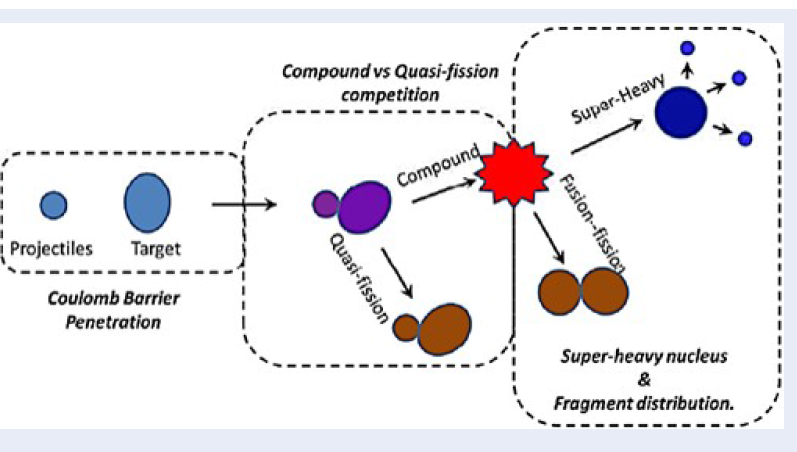
Fusion-fission in the reactions of the 58Ni + 251Cf and 64Zn + 248Cm combinations
- Sungkyunkwan University
Abstract
Introduction: In the present study, we evaluate the nucleon evaporation, alpha decay, and fission widths in the fusion-fission of the 58Ni+251Cf and 64Zn + 248Cm reactions for the synthesis of the super-heavy 309, 312126 nuclei.
Methods: The feasibility of the synthesis of the 309, 312126 isotopes via the mentioned systems is investigated based on the widths. The widths in the excitation energy range of E* = 10 – 100 MeV are calculated in the scope of the statistical model, in which the level density is calculated by using the Fermi-gas model. By employing the LISE++ code, the level densities the compound nuclei, 309, 312126 nuclei, are calculated to be about 105 – 1050 (MeV-1) in the energy range of interest.
Results: The lifetime of the compound nuclei, 309, 312126 nuclei, which are estimated based on the total width, is about 10-22-10-20 s. The fission has the largest width compared to those of the alpha decay and nucleon evaporations. Hence, the 58Ni+251Cf and 64Zn + 248Cm combinations are appropriate to the study of the mass distribution. In addition, the large alpha decay widths suggest the 309, 312126 isotopes be the alpha-decay nuclei.
Conclusion: The results are expected to be useful for considering measurements at facilities in the near future.

